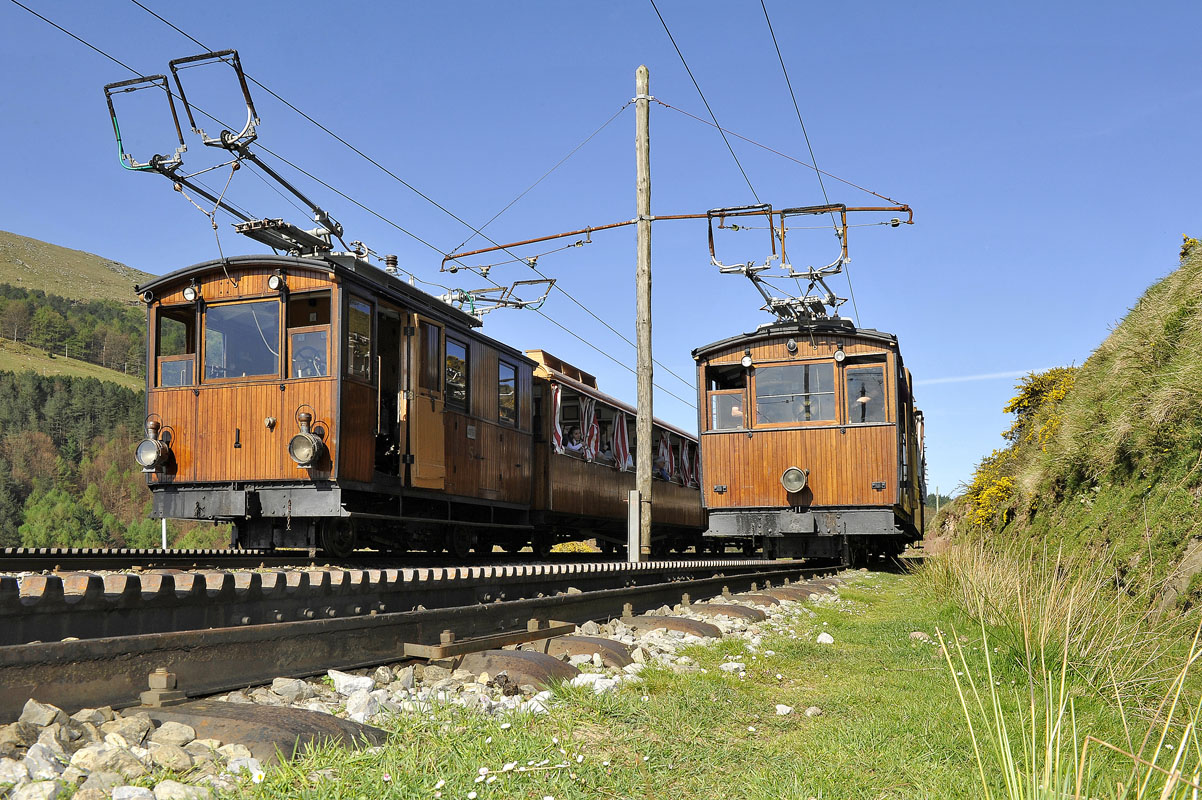All the rolling stock used today dates back to its origin.
In May 1996, the “Petit Train de La Rhune” added on two new carriages. Were they new? Not really, if we are to consider their date of manufacture was 1924, by the Etablissements Soulé from Bagnères-de-Bigorre.
These wooden carriages, as for all those of the fleet, have been restored entirely to their original version. Two local companies took on this task: Barland and Telletchea. The mechanics company, Barland, in Bayonne, is the only one to still possess the original plans of the carriages. The latter took charge of restoring the running gear and carriage chassis, representing more than 1000 hours of labour by specialised craftsmen.
The joinery company, Telletchea d’Ascain, remade the entire carriage superstructure, decidedly not going half-way, as it used the same tree essences as in 1924:
- The roof is made of Pyrenean fir
- The floor is made of pine from the Landes region
- The panelling is made of chestnut from the Ariège region
- The platform is made of iroko, an exotic rot-proof wood from Africa
All this required 1000 hours of craftsmanship. The carriages were delivered and tested for several weeks, and were then subjected to the most stringent brake tests in order to be declared ready for service.
As regards regular maintenance, every year, at the end of the tourist season, the “Petit Train” heads for its winter quarters (from November until the end of February) in the Etablissements Barland in order to be stripped down, checked, controlled, have the engines rewound, etc. Not a single detail is omitted. The running gear and safety features are checked via ultrasound and magnetic particle testing according to highly precise maintenance and control standards, by APAVE, a control body under the authority of the Bureau Interdépartemental des Remontées Mécaniques (Interdepartmental Lifting Equipment Bureau), the only one accredited for authorising our operation.
All these absolutely indispensable precautions are needed today, since we know that the “Petit Train de la Rhune” carries over 350 000 visitors per year.
Once it has undergone this highly advanced technical inspection, it is brought back to its depot at the Col de Saint-Ignace in order to be all spruced up for the new season. Here again, absolutely every detail is considered: the seats, platforms, inner panelling and outer cladding, are varnished; the curtains are washed, the brass handles polished, etc.
The small, typically Basque Col de Saint-Ignace train station is also repainted every year, to welcome our visitors in the most pleasant way possible.





